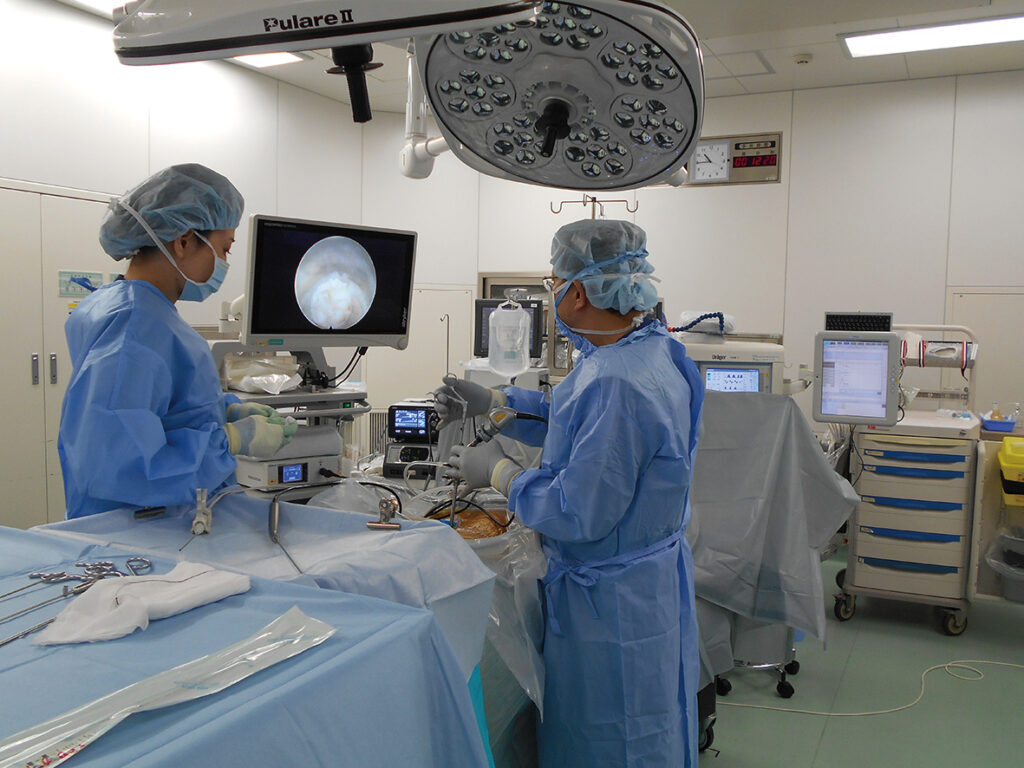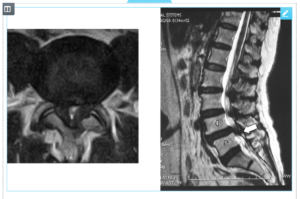Lumbar Intervertebral Disc Herniation
2022年5月12日
最終更新日時 :
2023年10月27日
 webmaster
webmaster
We will provide information on the surgical methods, length of hospital stay, insurance coverage, and more for intervertebral disc herniation.
lumbar disc herniation
What is lumbar disc herniation?
The intervertebral discs are located between the vertebrae of the spine (lumbar vertebrae), serving as cushions to absorb the impact on the core of the body (Figure 1). When strong forces are exerted on these discs or as they naturally lose their elasticity with age, cracks may develop, and the contents of the intervertebral disc can be pushed out, resulting in a protrusion. This is referred to as a disc herniation (Figure 2).


symptoms
When a herniated disc protrudes backward (towards the spinal canal's side), it may compress nerves, causing not only lower back pain but also pain in the lower limbs. As the symptoms progress, it can lead to difficulty in exerting force in the lower limbs, causing problems like stumbling and impaired mobility. Moreover, when the compression of nerves due to the herniation is severe and damages the bundle of nerves known as the 'cauda equina,' it can result in urinary and bowel dysfunction. Symptoms such as pain and numbness often worsen during activities involving forward bending of the lower back (flexion) or when sitting.
There are also special types of herniations, such as those protruding outward. Therefore, early diagnosis and treatment are crucial for herniated discs. If lower limb pain persists despite appropriate treatment, if lower limb paralysis progresses, or if urinary and bowel dysfunction, as mentioned earlier, develops, surgery becomes necessary.
There are also special types of herniations, such as those protruding outward. Therefore, early diagnosis and treatment are crucial for herniated discs. If lower limb pain persists despite appropriate treatment, if lower limb paralysis progresses, or if urinary and bowel dysfunction, as mentioned earlier, develops, surgery becomes necessary.
Treatment methods
A herniated disc that has protruded may naturally resolve, so it does not always necessitate surgery. However, larger herniations that lead to a loss of leg muscle strength, causing conditions like drop foot, or result in urinary dysfunction, are considered absolute indications for surgery. For pain and numbness, treatment typically begins with oral medications and nerve blocks. In cases of severe pain or when a rapid return to social and occupational activities is essential, surgery becomes a relative indication. Recently, an intermediate therapy called 'HerniCure' has become available as part of insurance-covered treatments, bridging the gap between surgery and nerve blocks.
Surgical procedure
"Intradiscal Enzyme Injection Therapy (HerniCure)
This is a treatment method in which a needle is inserted under local anesthesia in the operating room, and an enzyme (chymopapain) is injected into the intervertebral disc using X-ray fluoroscopy. The enzyme works within the intervertebral disc, reducing the pressure from the herniation and alleviating nerve compression. Its effectiveness has been reported to be around 70%. There is a rare possibility of drug allergy (anaphylaxis), requiring an overnight hospital stay. Additionally, this treatment can only be administered once.MED: Endoscopic Discectomy
This surgical method involves inserting an endoscope into a 16mm diameter tube and removing the herniated disc while visualizing it on a high-definition monitor. Our hospital has been using this technique since its opening.FELD: Full Endoscopic Lumbar Discectomy
This is an endoscopic surgical technique made possible by an 8mm diameter endoscope, which allows for even smaller incisions. Hernia removal is performed while water is flowing out from the endoscope's tip and returning, cutting through the hernia. Our hospital has been using this method since the year 2020 (Reiwa 2).*Depending on the type of hernia (such as giant hernias or cases with stenosis), endoscopic surgery may not be applicable, and hernia removal through a small incision may be necessary.

-1024x682.jpg)
.jpg)
.jpg)
